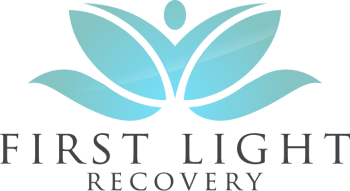When a person is struggling with post-traumatic stress disorder (PTSD), it can overshadow every aspect of life. Not only is it debilitating, but you might feel like you are stuck in a never-ending cycle of emotional turmoil: fear, anxiety, stress, and more.
This mental health condition can affect people of all ages, and an estimated 3.9% of the world population will experience post-traumatic stress disorder at some stage in their lives. People who have been exposed to violence or disasters, such as personal assault, combat, accidents, or natural disasters, can cause a victim to have persistent fear after the incident.
The truth is that unhealed trauma can take away a person’s sense of self. Too often, it causes a domino effect of self-sabotaging behaviors that damage relationships, career opportunities, and social interactions. Navigating trauma and recovery is tough. No matter how long ago the trauma occurred, it can continue to take a toll and even get worse over time.
But there is hope! If you or a loved one is suffering from PTSD, then our team at First Light Recovery is here to help. We offer an innovative approach with our in-patient mental health program. Our comprehensive treatment plan pairs evidence-based therapies with holistic services, helping you reclaim control over your life once again.
Why an In-Patient Program for PTSD Treatment?
Patients with mental health challenges often turn to outpatient care as their first attempt at recovery. While weekly appointments can be beneficial for working through the trauma in a mild case, this simplistic treatment approach just isn’t enough for patients suffering from moderate to severe cases of PTSD.
Here are a few reasons why inpatient treatment is often more effective than out-patient care for PTSD:
- Structured Environment: When mental health symptoms flare, it’s essential to have a professional team there to help. In this structured environment, we maintain a daily schedule that includes a variety of solutions to support your recovery. Not only do you have therapy sessions and group activities, but there is also personal time and an opportunity to rest. This unstructured time is essential to support your recovery because it helps your nervous system to relax.
- Personalized Care: Every patient is different, which is why our expert providers create a personalized treatment plan based on your unique needs. We evaluate the diagnosis, discuss your goals, and consider any individualized issues that need to be addressed. Our team is always looking at the bigger picture, with the intention of helping you feel better as soon as possible – with a strategy to support long-term recovery.
- PTSD Specialists: Our trained staff members have years of education and experience working with patients who are recovering from PTSD and complex post-traumatic stress disorder (CPTSD). We understand that trauma-related mental health disorders require special trauma informed care to help each patient feel safe and supported in their recovery.
- Avoiding Triggers: One reason an inpatient recovery program is so effective is that patients can step away from the stresses of daily life. Avoiding these triggers during recovery gives the person time and space to heal. Then, they are empowered with tools that can be taken back to their normal routine so these triggers don’t have the same emotional impact as before.
Healing PTSD Through Evidence-Based Therapies
One of the benefits of choosing First Light Recovery is that we integrate the most effective evidence-based therapies to provide our patients with optimal results. Our professional team understands that these complex trauma conditions often require a multi-faceted approach to help each patient have the best chance at recovery.
Research shows that patients with PTSD can recover within 6 months to 2 years, although some people have persistent symptoms for many years. It’s critical to seek treatment to alleviate the symptoms and support healing.
Our goal is to not only reduce current symptoms, but also promote healing that is long-lasting. Some of the techniques that might be included in your treatment plan include:
Cognitive Behavioral Therapy (CBT)
Many experts agree that CBT is a foundational piece in a successful treatment program for PTSD. When you are working with a therapist, they help you identify and challenge the thoughts and beliefs that have been distorted by the trauma. The goal is to help you form a new relationship with yourself, others around you, and the world.
These perceptions are often rooted in trauma, which is why it’s essential to get to the foundation so that you can rewrite the thought patterns. As these things are reframed, it brings a sense of control back into the person’s life because they feel like they are able to manage their reactions and emotions more effectively.
Dialectical Behavior Therapy (DBT)
This method of therapy is particularly helpful for patients struggling with CPTSD. Because the trauma was experienced over an extended period of time, it’s challenging for these patients to regulate their emotions and maintain relationships. Often, patients with CPTSD are stuck in patterns of self-destructive behaviors, and DBT can be an effective solution to support recovery.
Through DBT, each patient is trained in specific skills and tools. The goal is to give them healthier coping mechanisms, which have a natural impact on building resistance and emotional management.
Eye Movement Desensitization and Reprocessing (EMDR)
This specialized therapy is a science-based approach using bilateral stimulation. For example, the therapist might have you use certain eye movements or tapping while processing traumatic memories from the past.
The use of bilateral stimulation gives the body a way to let go of the trauma, helping to reduce the emotional intensity of the memories. Many patients, especially people suffering from nightmares and flashbacks, find that their symptoms are reduced using this method.
Carefully Navigating Trauma in Patients with CPTSD
While it’s usually necessary to revisit the trauma as part of the healing process, this requires a delicate approach because of the way a person might respond. Our trauma-informed therapists use a gradual process, with a focus on providing safety and support every step of the way.
As patients work through these memories in a therapeutic setting, they can find healing and integration through the process. As the intense emotions are coming up, our team uses stabilization techniques that help you manage overwhelming emotions and flashbacks that are coming to the surface. For example, we can integrate grounding exercises and mindfulness practices into the therapy session, helping you feel more steady and safer while processing emotions.
Family-Focused and Interpersonal Therapy
Patients with PTSD often find it difficult to maintain healthy relationships with family and friends. One element of a comprehensive treatment program can include interpersonal therapy, which helps the person improve their relationships. People often need help building the essential social skills that are needed, since these skills are often impacted by PTSD.
It’s essential to involve family members in the recovery process. With family therapy, each person understands how to create the ideal environment at home as the patient transitions from an in-patient recovery program back to their regular life.
Holistic Care to Optimize Recovery and Healing
In addition to these evidence-based therapies and services discussed above, our team at First Light Recovery also understands the importance of a holistic approach. We treat each patient as a whole human being, instead of simply trying to get rid of the surface-level symptoms. By improving overall health and wellness, it sets the stage for a long-term recovery.
Some of the holistic services included as part of our in-patient recovery program include:
- Mindfulness Practices: The more a person can be present and feel grounded in their body, the easier it is to manage the symptoms when needed. Some of these holistic therapies include deep breathing, meditation, and body awareness. Mindfulness can be a powerful method for emotional regulation, which improves focus and reduces anxiety at the same time.
- Dietary Considerations: A healthy diet plays an essential role in overall health because it’s necessary to provide the body with important minerals and nutrients. We serve nutrient-dense foods in our in-patient program and teach each patient about the best dietary choices. The right types of food can support energy levels and brain function and have a positive impact on recovery.
- Physical Movement: When the body is moving, it releases “happy hormones” that can help a person feel better overall. Regular exercise should always be part of a holistic healing plan, especially because of the way the movement complements other therapies. Physical activities, such as exercise and yoga, can reduce stress, release tension, and boost your mood at the same time.
Supportive Community for Your Recovery
Surrounding yourself with professional therapists and other like-minded people can be a powerful key to your recovery. As part of an in-patient recovery program, we use group therapy to help you connect with other people who have been through similar experiences. This approach helps to reduce your isolation and create a sense of belonging for everyone involved.
At the same time, family members are invited to participate in the recovery program. Your loved ones also need education and tools to offer their support in your ongoing recovery.
Learn More About PTSD Recovery Services
How much time is passing by because you are suffering from PTSD and missing out on some of the best experiences in life? It doesn’t have to be that way. Help is always available, giving you a fresh start and new opportunities to design the lifestyle that you desire. Find out if an in-patient PTSD treatment program is right for you. If you need help with your recovery, then it’s time to contact our professional team at First Light Recovery: (949) 326-3658.




